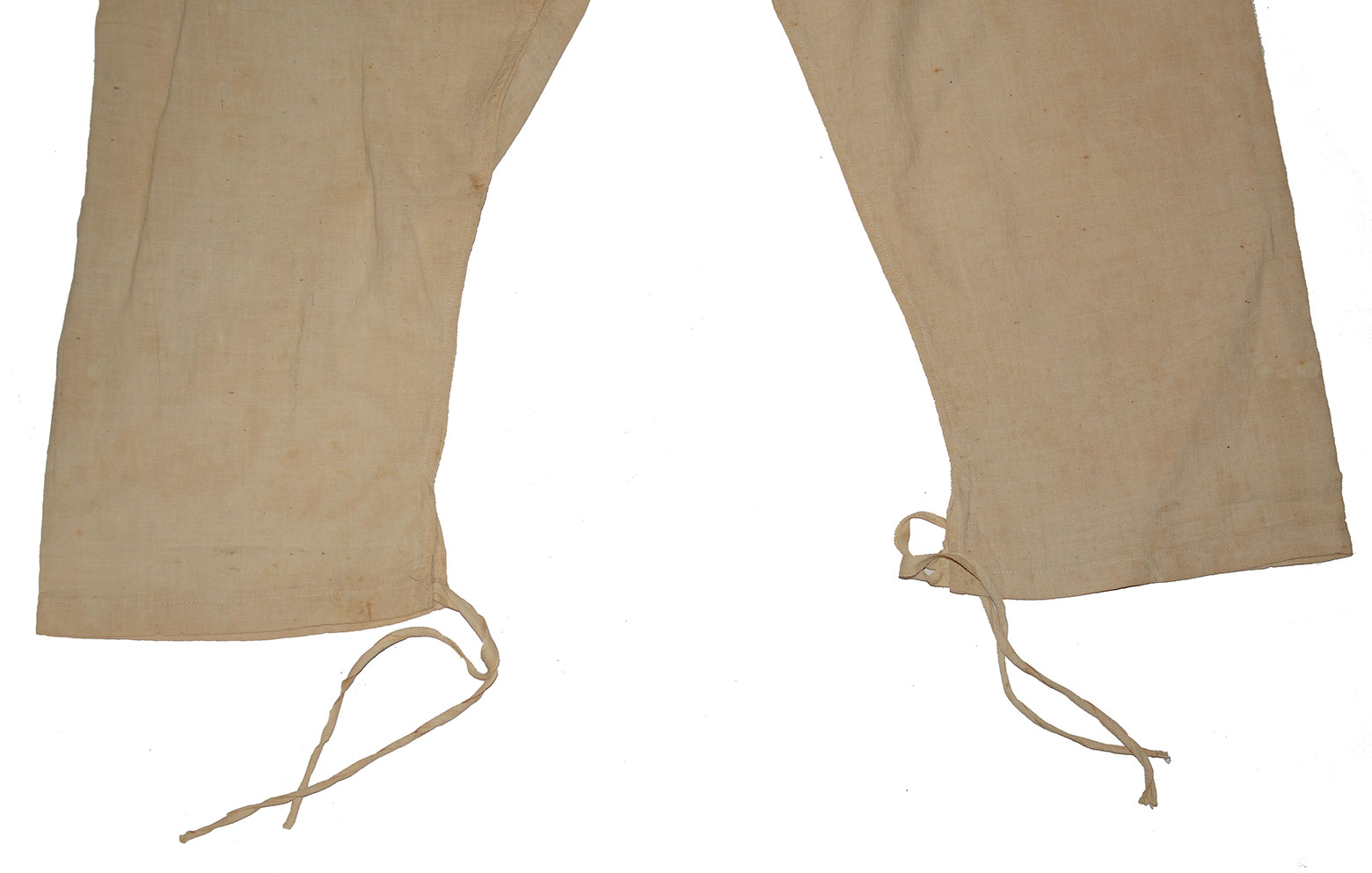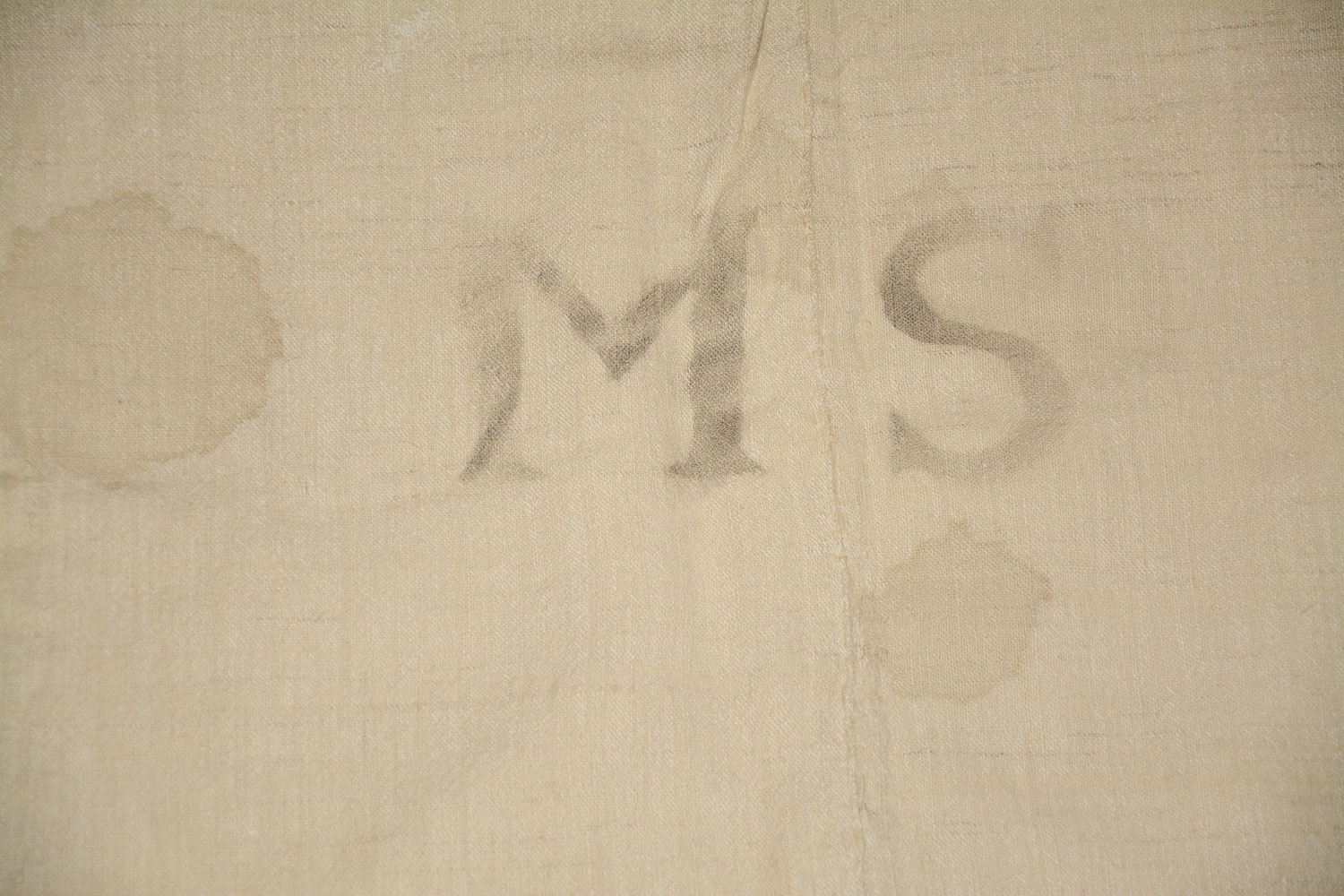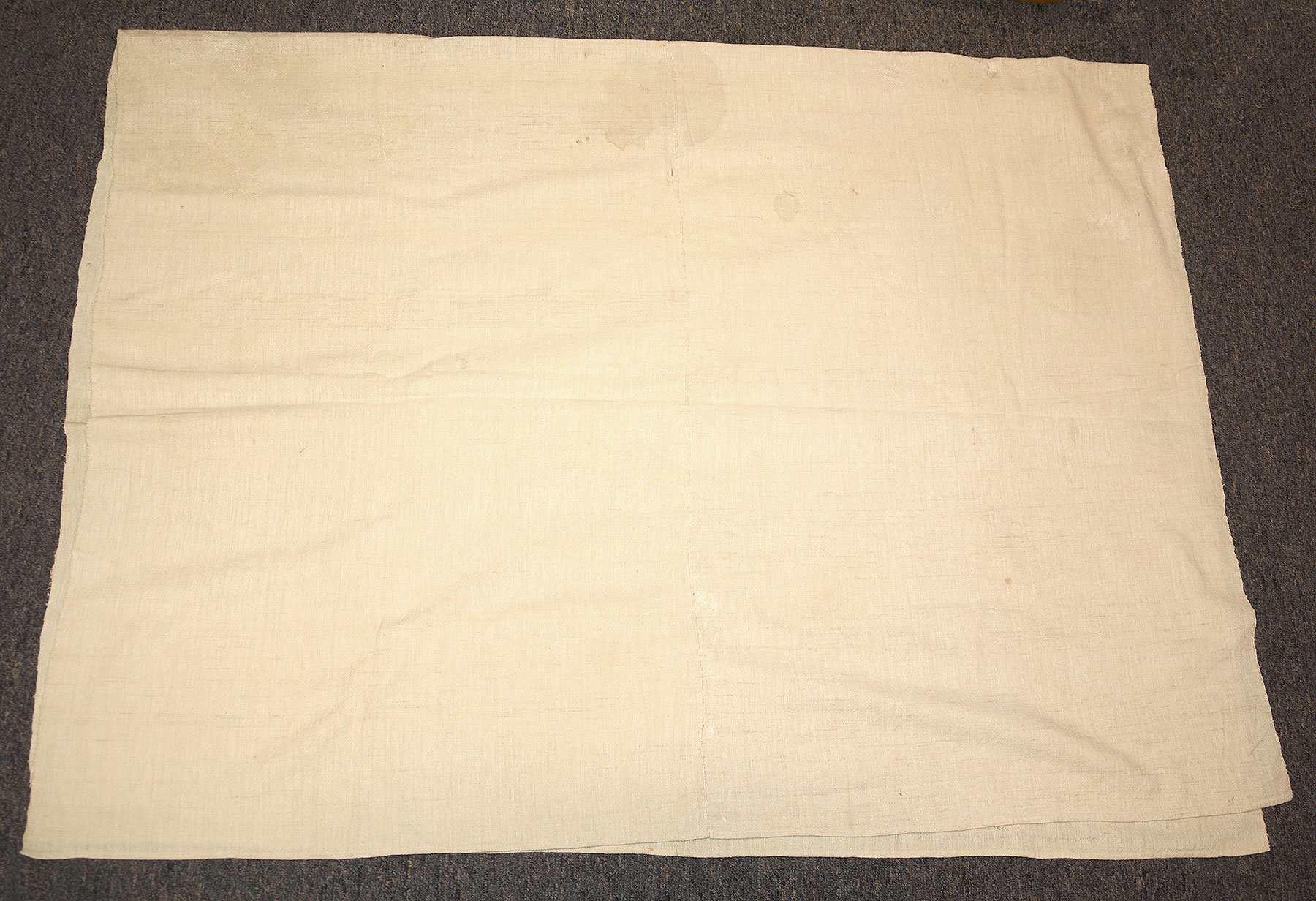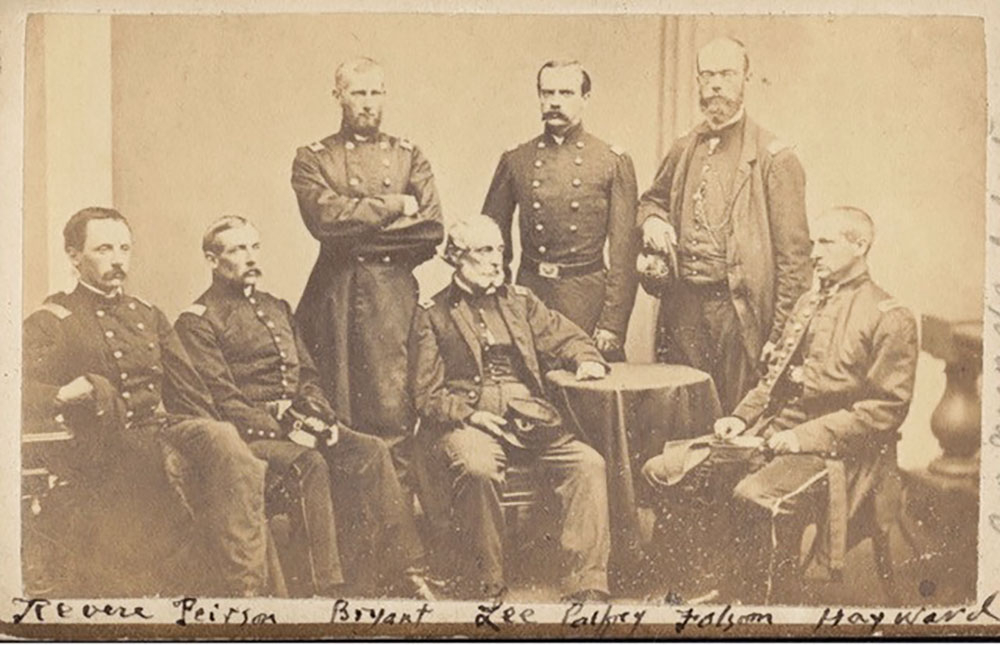site search
online catalog
CIVIL WAR DRAWERS AND MASSACHUSETTS MARKED BLANKET OF SURGEON HENRY BRYANT 20th MASS

Hover to zoom












$750.00 SOLD
Quantity Available: None
Item Code: 1179-274
This group descended from U.S. Army Surgeon Henry Perkins Bryant (1820-1867) and consists of his pair of privately purchased Civil War drawers, a white blanket with large, black “MS” stencil indicating it was state property, and a Sept. 1862 recruit’s medical document that had been forwarded to him and retained in his records. All are in excellent condition.
The drawers are standard Civil War construction and look very much like the military issue- cotton flannel with two-button waist band with lace and two sets of adjusting holes at the back, and one-piece legs, gathered at the back, full length, and fastening at the ankles with cloth tapes. In addition to the two bone buttons on the front of the waistband, however, the fly is closed at the middle by a single, mother-of-pearl, button, and the waistband itself is wider than those seen of military issue- being 4” on the front and narrowing to 2.5 on the back vent. The legs are 33” along the outer seam from bottom of the waistband to the cuff. The cuffs have a 2.5 vent with a 10” cloth tie at the corners, positioned on the inside of the ankle.
We see no markings: ink maker and inspector markings might easily wash out, but these appear unworn and commercial rather than army issue. For further details on Civil War drawers see John E. Tobey’s excellent article in The Columbia Rifles Research Compendium and Steve Osman’s article in the Military Collector and Historian. We note in passing that officers supplied their own clothing and uniforms, so finding a commercial item in an officer’s grouping is hardly surprising. Interestingly, Tobey, notes a limited study of issues made to one Massachusetts infantry company shows that close to a third of the men seem to have not drawn any drawers at all during a good part of the year (with one hard-core case not drawing any at all,) indicating they were simply going without and relying on long shirt tails, buying them from commercial sources, or getting them from home.
The blanket is an off-white, center seam blanket of loosely woven homespun type fabric, measuring about 56” by 80” overall, with the two panels about 28” wide each, seamed lengthwise, and hemmed along the top and bottom edges. The letters “MS” are stenciled in black, about 3” tall, with the top edges about 7” below the center of the blanket. The blanket show light wear- a couple of rubbed spots and one or two small holes, with the "MS” light, but legible. Perkins had early service with the 20th Massachusetts and early war blankets are noted as coming in a wide variety of colors and materials as the federal government and the states struggled to equip the mass of new volunteers. Bryant may have purchased it from the Quartermaster or it may have come from the medical and hospital stores issued to the regiment. (But, we do not think “MS” in this case refers to “medical staff.”) We note also that we handled another white blanket from a member of the 20th Massachusetts not long ago, one that had been stenciled by the soldier and passed down in the family with a note attached to it. That example appeared to have some narrow red stripes on one end (we did not unroll it,) but the dominant color was certainly white, making it possible the 20th Mass in particular received white blankets when it first organized.
Henry Perkins Bryant (1820-1867) was a 41-year old physician when he enrolled July 1, 1861, at Readville, MA, and mustered in July 27. He had gained a medical degree from Harvard in 1843, studied in Paris and served as volunteer surgeon in the French army in Algeria in hopes of the climate improving his health in 1846. He returned to the U.S. in 1847, but gave up medicine because of his health, becoming instead a well-known naturalist and ornithologist. At the beginning of the war he returned to medicine and the military, passing the exam and gaining a US commission as an Assistant Surgeon, but elected instead to take up a Massachusetts commission as Surgeon in the 20th Mass, enrolling on July 1, 1861, and mustering in July 27. He was described at standing 5’9-1/2” with a dark complexion, gray hair and gray eyes.
Bryant was appointed Brigade Surgeon in Chief for Lander’s Brigade on Sept. 19, 1861, and commissioned a Surgeon of US Volunteers dating to August, remained with the regiment until after the debacle at Balls Bluff, where the regiment lost 15 officers and men killed, 44 wounded, and another 135 missing. He then followed Lander to service in the Shenandoah, and after Lander’s death served under Shields as Medical Director. He organized the army hospitals at Winchester, and in Fall 1862 organized Cliffburn Hospital near Washington, and at the end of December 1862 was put in charge of Lincoln Hospital in that city. His health began to fail again, however, and he was obliged to resign as of July 16, 1863, and return to civilian life and ornithology. He made a brief trip to Europe in 1866 and in 1867 stopped in Puerto Rico on his way to St. Thomas, either for his health, collecting bird specimens, or both, but died there February 1, 1867. He had married in 1848. The couple had five children. He was reinterred in Cambridge, Mass., in 1872.
We show an image of officers of the 20th Massachusetts, where Lander is identified as third from left, along with a bust view portrait. [sr][ph:L]
~~~~~~~~~~~~~~~~~~~~~~~~~~~~~~~~~~~
THIS ITEM, AS WITH ALL OTHER ITEMS AVAILABLE ON OUR WEB SITE,
MAY BE PURCHASED THROUGH OUR LAYAWAY PROGRAM.
CLICK HERE FOR OUR POLICIES AND TERMS.
THANK YOU!
Inquire About CIVIL WAR DRAWERS AND MASSACHUSETTS MARKED BLANKET OF SURGEON HENRY BRYANT 20th MASS
Most Popular
Historical Firearms Stolen From The National Civil War Museum In Harrisburg, Pa »
Theft From Gravesite Of Gen. John Reynolds »
Selection Of Unframed Prints By Don Troiani »
Fine Condition Brass Infantry Bugle Insignia »
Large English Bowie Knife With Sheath 1870’S – 1880’S »
Imported (Clauberg) Us Model 1860 Light Cavalry Officer's Saber »
featured item
HANDSOME INSCRIBED MOORE REVOLVER WITH HOLSTER OF C.H. RICHMOND
Moore revolvers used the .32 caliber self-contained metallic rimfire cartridge, which was available and convenient. They were not subject to damage by rough handling, weather resistant, and made a pistol fast to load. Moore also provided value for… (2023-2603). Learn More »


